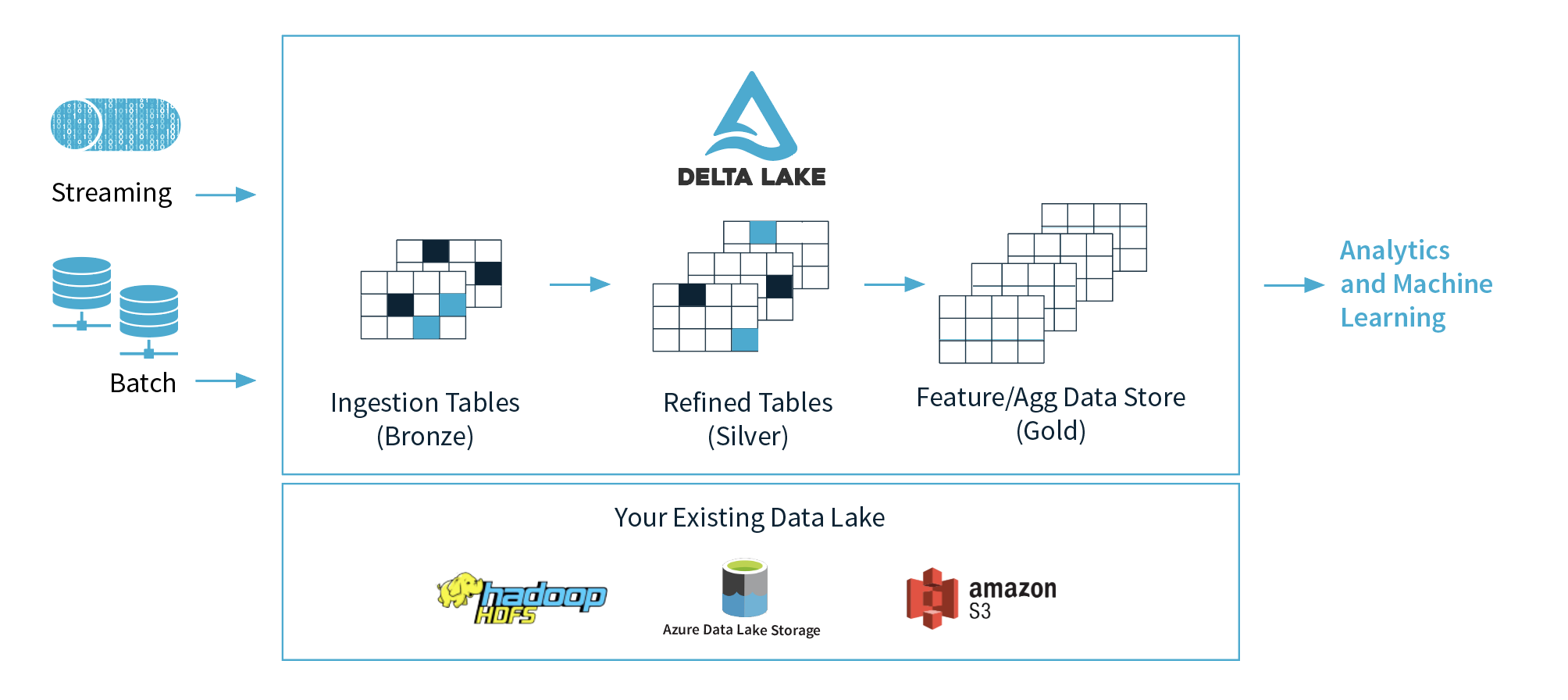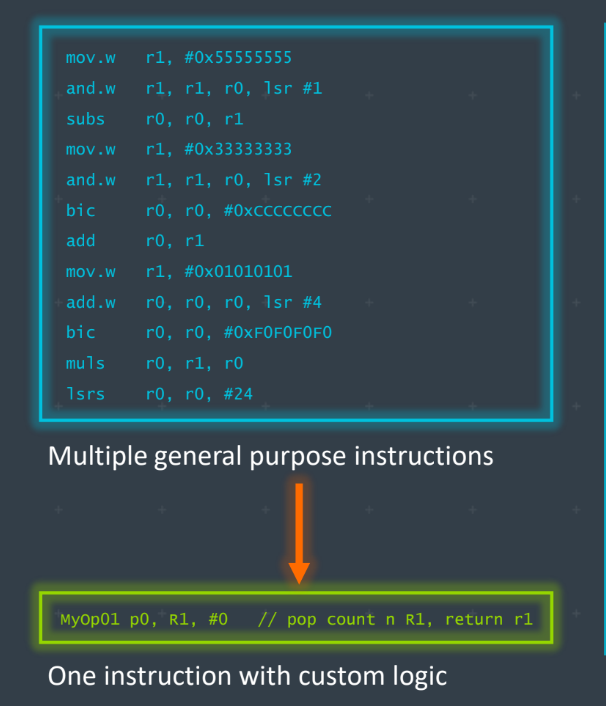computing
Auto Added by WPeMatico
Auto Added by WPeMatico
Atlassian today announced that it has acquired Code Barrel, the makers of Automation for Jira, a low-code tool for easily automating many aspects of Jira that’s also one of the most popular add-ons for Jira Software and Jira Service Desk in Atlassian’s marketplace. The two companies did not disclose the price of the acquisition.
Sydney-based Code Barrel was founded by two of the first engineers who built Jira at Atlassian, Nick Menere and Andreas Knecht. With this acquisition, they are returning to Atlassian after four years in startup land.
“For me and Andreas, it’s almost like coming home,” said Menere, who joined the Jira team in 2005 when there were only a handful of developers working on the product. “It’s the place where we pretty much learned how to develop software and how to develop product. For us, this was the only company we would ever go back to.”
As the name implies, Automation for Jira makes it easy to automate recurring tasks in Atlassian’s issue and project tracking service. “Increasingly, [our customers] are having to spend a lot of time on the mundane,” Noah Wasmer, the VP of Product for Tech Teams at Atlassian, told me. “What we’re seeing is that with Jira as the backbone, they are interacting with a lot of systems, are duplicating work, are manually entering work into different systems. And so what we’re finding is that they’re spending an inordinate amount of time doing things that aren’t actually helping them build and create those next-generation things that help change our world.”
If you want to reduce this kind of duplication of work, then automation is the obvious thing to look at. And with more than 6,000 companies that found Code Barrel’s solution in Atlassian’s marketplace, plus the founders’ obvious connection to the company, Automation for Jira must have been an obvious candidate for an acquisition.
Wasmer also stressed that the fact that they built a no-code tool will allow anybody who uses Jira to create scripts without having to be a programmer. Automation for Jira allows users to set up time-based rules or those that run based on triggers inside of Jira. It also features third-party integrations with SMS, Slack and Microsoft Teams, among others.
For the time being, Automation for Jira will remain in the Atlassian Marketplace and will continue to sell at the same price of $5/user/month for teams with up to 10 users and $2.5/user/month for teams between 11 and 100 users, with prices going down from there for larger enterprises. Surely, Atlassian will start integrating some of the tool’s features into Jira, but for the time being the company doesn’t have anything to announce on that front.
Powered by WPeMatico
Databricks, the big data analytics service founded by the original developers of Apache Spark, today announced that it is bringing its Delta Lake open-source project for building data lakes to the Linux Foundation under an open governance model. The company announced the launch of Delta Lake earlier this year, and, even though it’s still a relatively new project, it has already been adopted by many organizations and has found backing from companies like Intel, Alibaba and Booz Allen Hamilton.
“In 2013, we had a small project where we added SQL to Spark at Databricks […] and donated it to the Apache Foundation,” Databricks CEO and co-founder Ali Ghodsi told me. “Over the years, slowly people have changed how they actually leverage Spark and only in the last year or so it really started to dawn upon us that there’s a new pattern that’s emerging and Spark is being used in a completely different way than maybe we had planned initially.”
This pattern, he said, is that companies are taking all of their data and putting it into data lakes and then doing a couple of things with this data, machine learning and data science being the obvious ones. But they are also doing things that are more traditionally associated with data warehouses, like business intelligence and reporting. The term Ghodsi uses for this kind of usage is “Lake House.” More and more, Databricks is seeing that Spark is being used for this purpose and not just to replace Hadoop and doing ETL (extract, transform, load). “This kind of Lake House patterns we’ve seen emerge more and more and we wanted to double down on it.”
 Spark 3.0, which is launching
Spark 3.0, which is launching today soon, enables more of these use cases and speeds them up significantly, in addition to the launch of a new feature that enables you to add a pluggable data catalog to Spark.
Delta Lake, Ghodsi said, is essentially the data layer of the Lake House pattern. It brings support for ACID transactions to data lakes, scalable metadata handling and data versioning, for example. All the data is stored in the Apache Parquet format and users can enforce schemas (and change them with relative ease if necessary).
It’s interesting to see Databricks choose the Linux Foundation for this project, given that its roots are in the Apache Foundation. “We’re super excited to partner with them,” Ghodsi said about why the company chose the Linux Foundation. “They run the biggest projects on the planet, including the Linux project but also a lot of cloud projects. The cloud-native stuff is all in the Linux Foundation.”
“Bringing Delta Lake under the neutral home of the Linux Foundation will help the open-source community dependent on the project develop the technology addressing how big data is stored and processed, both on-prem and in the cloud,” said Michael Dolan, VP of Strategic Programs at the Linux Foundation. “The Linux Foundation helps open-source communities leverage an open governance model to enable broad industry contribution and consensus building, which will improve the state of the art for data storage and reliability.”
Powered by WPeMatico
Sophos said it is fixing a vulnerability in its Cyberoam firewall appliances, which a security researcher says can allow an attacker to gain access to a company’s internal network without needing a password.
The vulnerability allows an attacker to remotely gain “root” permissions on a vulnerable device, giving them the highest level of access, by sending malicious commands across the internet. The attack takes advantage of the web-based operating system that sits on top of the Cyberoam firewall.
Once a vulnerable device is accessed, an attacker can jump onto a company’s network, according to the researcher who shared their findings exclusively with TechCrunch.
Cyberoam devices are typically used in large enterprises, sitting on the edge of a network and acting as a gateway to allow employees in while keeping hackers out. These devices filter out bad traffic, and prevent denial-of-service attacks and other network-based attacks. They also include virtual private networking (VPN), allowing remote employees to log on to their company’s network when they are not in the office.
It’s a similar vulnerability to recently disclosed flaws in corporate VPN providers, notably Palo Alto Networks, Pulse Secure and Fortinet, which allowed attackers to gain access to a corporate network without needing a user’s password. Many large tech companies, including Twitter and Uber, were affected by the vulnerable technology, prompting Homeland Security to issue an advisory to warn of the risks.
Sophos, which bought Cyberoam in 2014, issued a short advisory this week, noting that the company rolled out fixes on September 30.
The researcher, who asked to remain anonymous, said an attacker would only need an IP address of a vulnerable device. Getting vulnerable devices was easy, they said, by using search engines like Shodan, which lists around 96,000 devices accessible to the internet. Other search engines put the figure far higher.
A Sophos spokesperson disputed the number of devices affected, but would not provide a clearer figure.
“Sophos issued an automatic hotfix to all supported versions in September, and we know that 99% of devices have already been automatically patched,” said the spokesperson. “There are a small amount of devices that have not as of yet been patched because the customer has turned off auto-update and/or are not internet-facing devices.”
Customers still affected can update their devices manually, the spokesperson said. Sophos said the fix will be included in the next update of its CyberoamOS operating system, but the spokesperson did not say when that software would be released.
The researcher said they expect to release the proof-of-concept code in the coming months.
Powered by WPeMatico
Suse, the newly independent open-source company behind the eponymous Linux distribution and an increasingly large set of managed enterprise services, today announced a bit of a new strategy as it looks to stay on top of the changing trends in the enterprise developer space. Over the course of the last few years, Suse put a strong emphasis on the OpenStack platform, an open-source project that essentially allows big enterprises to build something in their own data centers akin to the core services of a public cloud like AWS or Azure. With this new strategy, Suse is transitioning away from OpenStack . It’s ceasing both production of new versions of its OpenStack Cloud and sales of its existing OpenStack product.
“As Suse embarks on the next stage of our growth and evolution as the world’s largest independent open source company, we will grow the business by aligning our strategy to meet the current and future needs of our enterprise customers as they move to increasingly dynamic hybrid and multi-cloud application landscapes and DevOps processes,” the company said in a statement. “We are ideally positioned to execute on this strategy and help our customers embrace the full spectrum of computing environments, from edge to core to cloud.”
What Suse will focus on going forward are its Cloud Application Platform (which is based on the open-source Cloud Foundry platform) and Kubernetes-based container platform.
Chances are, Suse wouldn’t shut down its OpenStack services if it saw growing sales in this segment. But while the hype around OpenStack died down in recent years, it’s still among the world’s most active open-source projects and runs the production environments of some of the world’s largest companies, including some very large telcos. It took a while for the project to position itself in a space where all of the mindshare went to containers — and especially Kubernetes — for the last few years. At the same time, though, containers are also opening up new opportunities for OpenStack, as you still need some way to manage those containers and the rest of your infrastructure.
The OpenStack Foundation, the umbrella organization that helps guide the project, remains upbeat.
“The market for OpenStack distributions is settling on a core group of highly supported, well-adopted players, just as has happened with Linux and other large-scale, open-source projects,” said OpenStack Foundation COO Mark Collier in a statement. “All companies adjust strategic priorities from time to time, and for those distro providers that continue to focus on providing open-source infrastructure products for containers, VMs and bare metal in private cloud, OpenStack is the market’s leading choice.”
He also notes that analyst firm 451 Research believes there is a combined Kubernetes and OpenStack market of about $11 billion, with $7.7 billion of that focused on OpenStack. “As the overall open-source cloud market continues its march toward eight figures in revenue and beyond — most of it concentrated in OpenStack products and services — it’s clear that the natural consolidation of distros is having no impact on adoption,” Collier argues.
For Suse, though, this marks the end of its OpenStack products. As of now, though, the company remains a top-level Platinum sponsor of the OpenStack Foundation and Suse’s Alan Clark remains on the Foundation’s board. Suse is involved in some of the other projects under the OpenStack brand, so the company will likely remain a sponsor, but it’s probably a fair guess that it won’t continue to do so at the highest level.
Powered by WPeMatico
At its annual TechCon event in San Jose, Arm today announced Custom Instructions, a new feature of its Armv8-M architecture for embedded CPUs that, as the name implies, enables its customers to write their own custom instructions to accelerate their specific use cases for embedded and IoT applications.
“We already have ways to add acceleration, but not as deep and down to the heart of the CPU. What we’re giving [our customers] here is the flexibility to program your own instructions, to define your own instructions — and have them executed by the CPU,” ARM senior director for its automotive and IoT business, Thomas Ensergueix, told me ahead of today’s announcement.
He noted that Arm always had a continuum of options for acceleration, starting with its memory-mapped architecture for connecting over a bus GPUs and today’s neural processor units. This allows the CPU and the accelerator to run in parallel, but with the bus being the bottleneck. Customers also can opt for a co-processor that’s directly connected to the CPU, but today’s news essentially allows Arm customers to create their own accelerated algorithms that then run directly on the CPU. That means the latency is low, but it’s not running in parallel, as with the memory-mapped solution.
As Arm argues, this setup allows for the lowest-cost (and risk) path for integrating customer workload acceleration, as there are no disruptions to the existing CPU features and it still allows its customers to use the existing standard tools with which they are already familiar.
 For now, custom instructions will only be available to be implemented in the Arm Cortex-M33 CPUs, starting in the first half of 2020. By default, it’ll also be available for all future Cortex-M processors. There are no additional costs or new licenses to buy for Arm’s customers.
For now, custom instructions will only be available to be implemented in the Arm Cortex-M33 CPUs, starting in the first half of 2020. By default, it’ll also be available for all future Cortex-M processors. There are no additional costs or new licenses to buy for Arm’s customers.
Ensergueix noted that as we’re moving to a world with more and more connected devices, more of Arm’s customers will want to optimize their processors for their often very specific use cases — and often they’ll want to do so because by creating custom instructions, they can get a bit more battery life out of these devices, for example.
Arm has already lined up a number of partners to support Custom Instructions, including IAR Systems, NXP, Silicon Labs and STMicroelectronics .
“Arm’s new Custom Instructions capabilities allow silicon suppliers like NXP to offer their customers a new degree of application-specific instruction optimizations to improve performance, power dissipation and static code size for new and emerging embedded applications,” writes NXP’s Geoff Lees, SVP and GM of Microcontrollers. “Additionally, all these improvements are enabled within the extensive Cortex-M ecosystem, so customers’ existing software investments are maximized.”
In related embedded news, Arm also today announced that it is setting up a governance model for Mbed OS, its open-source operating system for embedded devices that run an Arm Cortex-M chip. Mbed OS has always been open source, but the Mbed OS Partner Governance model will allow Arm’s Mbed silicon partners to have more of a say in how the OS is developed through tools like a monthly Product Working Group meeting. Partners like Analog Devices, Cypress, Nuvoton, NXP, Renesas, Realtek,
Samsung and u-blox are already participating in this group.
Powered by WPeMatico
API and microservices platform Kong today announced that it has acquired Insomnia, a popular open-source tool for debugging APIs. The company, which also recently announced that it had raised a $43 million Series C round, has already put this acquisition to work by using it to build Kong Studio, a tool for designing, building and maintaining APIs for both REST and GraphQL endpoints.
As Kong CEO and co-founder Augusto Marietti told me, the company wants to expand its platform to cover the full service life cycle. So far, it has mostly focused on the runtime, but now it wants to enable developers to also design and test their services. “We looked at the space and Insomnia is the number one open source API testing platform,” he told me. “And we thought that by having Insomnia in our portfolio, we will get the pre-production part of things and on top of that, we’ll be able to build Kong Studio, which is kind of the other side of Insomnia that allows you to design APIs.”
Insomnia launched in 2015, as a side project of its sole developer, Greg Schier. Schier quit his job in 2016 to focus on Insomnia full-time and then open-sourced it in 2017. Today, the project has 100 contributors and the tool is used by “hundreds of thousands of developers,” according to Schier.
Marietti says both the open-source project and the paid Insomnia Plus service will continue to operate as before.
In addition to Kong Studio and the Insomnia acquisition, the company also today launched the latest version of its Enterprise service, the aptly named Kong Enterprise 2020. New features here include support for REST, Kafka Streams and GraphQL. Kong also launched Kong Gateway 2.0 with additional GraphQL support and the ability to write plugins in Go.
Powered by WPeMatico
Microsoft today announced that Windows Virtual Desktop (WVD), its Azure-based system for virtualizing the Windows and Office user experience it announced last September, is now generally available. Using WVD, enterprises can give their employees access to virtualized applications and remote desktops, including the ability to provide multi-session Windows 10 experiences, something that sets Microsoft’s own apart from that of other vendors that offer virtualized Windows desktops and applications.
In addition to making the service generally available, Microsoft is also rolling it out globally, whereas the preview was U.S.-only and the original plan was to slowly roll it out globally. Scott Manchester, the principal engineering lead for WVD, also told me that more than 20,000 companies signed up for the preview. He also noted that Microsoft Teams is getting enhanced support in WVD with a significantly improved video conferencing experience.
Shortly after announcing the preview of WVD, Microsoft acquired a company called FSLogix, which specialized in provisioning the same kind of virtualized Windows environments that Microsoft offers through WVD. As Microsoft’s corporate VP for Microsoft 365 told me ahead of today’s announcement, the company took a lot of the know-how from FSLogix to ensure that the user experience on WVD is as smooth as possible.
Brad Anderson, CVP of Microsoft 365, noted that just as enterprises are getting more comfortable with moving some of their infrastructure to the cloud (and have others worry about managing it), there is now also growing demand from organizations that want this same experience for their desktop experiences. “They look at the cloud as a way of saying, ‘listen, let the experts manage the infrastructure. They can optimize it; they can fine-tune it; they can make sure that it’s all done right.’ And then I’ll just have a first-party service — in this case Microsoft — that I can leverage to simplify my life and enable me to spin up and down capacity on demand,” Anderson said. He also noted, though, that making sure that these services are always available is maybe even more critical than for other workloads that have moved to the cloud. If your desktop stops working, you can’t get much done, after all.
Anderson also stressed that if a customer wants a multi-session Windows 10 environment in the cloud, WVD is the only way to go because that is the only way to get a license to do so. “We’ve built the operating system, we built the public cloud, so that combination is going to be unique and this gives us the ability to make sure that that Windows 10 experience is the absolute best on top of that public cloud,” he noted.
He also stressed that the FSLogix acquisition enabled his team to work with the Office team to optimize the user experience there. Thanks to this, when you spin up a new virtualized version of Outlook, for example, it’ll just take a second or two to load instead of almost a minute.
A number of companies are also still looking to upgrade their old Windows 7 deployments. Microsoft will stop providing free security patches for them very soon, but on WVD, these users will still be able to get access to virtualized Windows 7 desktops with free extended security updates until January 2023. Anderson does not believe that this will be a major driver for WVD adoption, but he does see “pockets of customers who are working on their transition.”
Enterprises can access Windows 10 Enterprise and Windows 7 Enterprise on WVD at no additional licensing cost (though, of course, the Azure resources they consume will cost them) if they have an eligible Windows 10 Enterprise or Microsoft 365 license.
Powered by WPeMatico
Google today announced its plans to open a new cloud region in Warsaw, Poland to better serve its customers in Central and Eastern Europe.
This move is part of Google’s overall investment in expanding the physical footprint of its data centers. Only a few days ago, after all, the company announced that, in the next two years, it would spend $3.3 billion on its data center presence in Europe alone.
Google Cloud currently operates 20 different regions with 61 availability zones. Warsaw, like most of Google’s regions, will feature three availability zones and launch with all the standard core Google Cloud services, including Compute Engine, App Engine, Google Kubernetes Engine, Cloud Bigtable, Cloud Spanner and BigQuery.
To launch the new region in Poland, Google is partnering with Domestic Cloud Provider (a.k.a. Chmury Krajowej, which itself is a joint venture of the Polish Development Fund and PKO Bank Polski). Domestic Cloud Provider (DCP) will become a Google Cloud reseller in the country and build managed services on top of Google’s infrastructure.
“Poland is in a period of rapid growth, is accelerating its digital transformation, and has become an international software engineering hub,” writes Google Cloud CEO Thomas Kurian. “The strategic partnership with DCP and the new Google Cloud region in Warsaw align with our commitment to boost Poland’s digital economy and will make it easier for Polish companies to build highly available, meaningful applications for their customers.”
Powered by WPeMatico
Quantum computing is almost ready for prime time, and, according to most experts, now is the time to start learning how to best develop for this new and less than intuitive technology. With multiple vendors like D-Wave, Google, IBM, Microsoft and Rigetti offering commercial and open-source hardware solutions, simulators and other tools, there’s already a lot of fragmentation in this business. QC Ware, which is launching its Forge cloud platform into beta today, wants to become the go-to middleman for accessing the quantum computing hardware and simulators of these vendors.
Forge, which like the rest of QC Ware’s efforts is aimed at enterprise users, will give developers the ability to run their algorithms on a variety of hardware platforms and simulators. The company argues that developers won’t need to have any previous expertise in quantum computing, though having a bit of background surely isn’t going to hurt. From Forge’s user interface, developers will be able to run algorithms for binary optimization, chemistry simulation and machine learning.
“Practical quantum advantage will occur. Most experts agree that it’s a matter of ‘when’ not ‘if.’ The way to pull that horizon closer is by having the user community fully engaged in quantum computing application discovery. The objective of Forge is to allow those users to access the full range of quantum computing resources through a single platform,” said Matt Johnson, CEO, QC Ware. “To assist our customers in that exploration, we are spending all of our cycles working on ways to squeeze as much power as possible out of near-term quantum computers, and to bake those methods into Forge.”
Currently, QC Ware Forge offers access to hardware from D-Wave, as well as open-source simulators running on Google’s and IBM’s clouds, with plans to support a wider variety of platforms in the near future.
Initially, QC Ware also told me that it offered direct access to IBM’s hardware, but that’s not yet the case. “We currently have the integration complete and actively utilized by QC Ware developers and quantum experts,” QC Ware’s head of business development Yianni Gamvros told me. “However, we are still working with IBM to put an agreement in place in order for our end-users to directly access IBM hardware. We expect that to be available in our next major release. For users, this makes it easier for them to deal with the churn. We expect different hardware vendors will lead at different times and that will keep changing every six months. And for our quantum computing hardware vendors, they have a channel partner they can sell through.”
Users who sign up for the beta will receive 30 days of access to the platform and one minute of actual Quantum Computing Time to evaluate the platform.
Powered by WPeMatico
Apple Arcade seems purpose-built to make room in the market for beautiful, sad, weird, moving, slow, clever and heartfelt. All things that the action, shooter and MOBA-driven major market of games has done nothing to foster over the last decade.
I had a chance to play a bunch of the titles coming to Apple Arcade, which launched today in a surprise move for some early testers of iOS 13. Nearly every game I played was fun, all were gorgeous and some were really, really great.
A few I really enjoyed, in no particular order:

Where Cards Fall — A Snowman game from Sam Rosenthal. A beautiful game with a clever card-based mechanic that allows room for story moments and a ramping difficulty level that should be fantastic for short play sessions. Shades of Monument Valley, of course, in its puzzle + story interleave and in its willingness to get super emotional about things right away. More of this in gaming! Super satisfying gameplay and crisp animations abound.

Overland — Finji — Overland is one of my most anticipated games from the bunch, I’ve been following the development of this game from the Night in the Woods and Canabalt creators for a long time. It does not disappoint, with a stylized but somehow hyper-realized post apocalyptic turn-based system that transmits urgency through economy of movement. Every act you take counts. Given that it’s a roguelike, the story is told through the world rather than through an individual character’s narrative and the world does a great job of it.

Oceanhorn 2 — Cornfox & Brothers — The closest to a native Zelda you’ll get on iOS — this plays great on a controller. Do yourself a favor and try it that way.

Spek — RAC7 — One of those puzzle games people will plow through, it makes the mechanics simple to understand, then begins to really push and prod at your mastery of them over time. The AR component of the app seems like it will be a better party game than solo experience, but the effects used here are great and it really plays with distance and perspective in a way that an AR game should. A good totem for the genre going forward.
I was able to play several of the games across all three platforms, including Apple TV with an Xbox controller, iPhone and iPad. While some favored controller (Skate City) and others touch controls (Super Impossible Road), all felt like I could play them either way without much difficulty.
There are also some surprises in the initial batch of games, like Lego Brawls — a Smash Brothers clone that will be a big hit for car rides and get-togethers, I think.
My hope is that the Apple Arcade advantage, an aggressive $4.99 price and prime placement in the App Store, may help create an umbrella of sorts for games that don’t fit the “big opening weekend” revenue mold, and I hope Apple leans into that. I know that there may be action-oriented and big-name titles in the package now and in the future, and that’s fine. But there are many kinds of games out there that are fantastic, but “minor” in the grand scheme of things, and having a place that could create sustainability in the market for these gems is a great thing.
The financial terms were not disclosed by Apple, but many of the developers appear to have gotten upfront money to make games for the platform and, doubtless, there is a rev share on some sort of basis, probably usage or installs. Whatever it is, I hope the focus is on sustainability, but the people responsible for Arcade inside Apple are making all the right noises about that, so I have hope.
I am especially glad that Apple is being aggressive with the pricing and with the restrictions it has set for the store, including no in-app purchases or ads. This creates an environment where a parent (ratings permitting) can be confident that a kid playing games from the Arcade tab will not be besieged with casino ads in the middle of their puzzle game.
There is, however, a general irony in the fact that Apple had to create Apple Arcade because of the proliferation of loot box/currency/in-app purchase revenue models. An economy driven by the App Store’s overall depressive effect on the price of games and the decade long acclimation people have had to spending less and less, down to free, for games and apps on the store.
By bundling them into a subscription, Apple sidesteps the individual purchase barrier that it has had a big hand in creating in the first place. While I don’t think it is fully to blame — plenty of other platforms aggressively promote loot box mechanics — a big chunk of the responsibility to fix this distortion does rest on Apple. Apple Arcade is a great stab at that and I hope that the early titles are an indicator of the overall variety and quality that we can expect.
Powered by WPeMatico